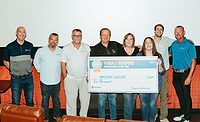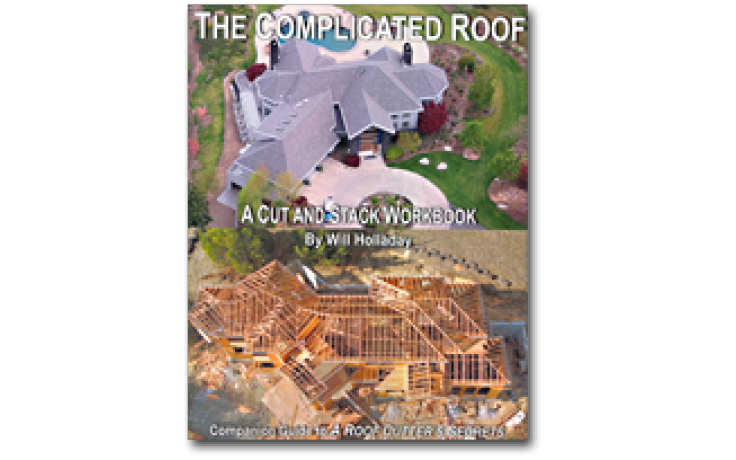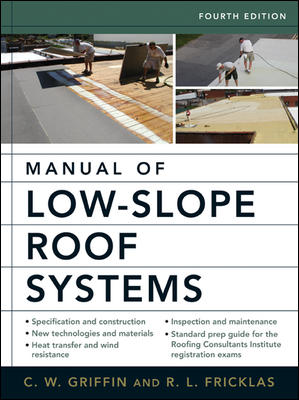Contractor Q&A With: NRCA Chairman Lindy Ryan
Overcome Price Objections, Product Selection Challenges and Installation Questions

Photo courtesy of Lindy Ryan. When she’s not focused on the roofing industry, Lindy Ryan has an adventurous side that has taken her across the globe. She poses with a real lion during a safari in South Africa in 2015.

She also visited Prince Edward Island, Canada with past NRCA presidents Rich Nugent (left) and Neslon Braddy (right).

Lindy Ryan has been to nearly all seven continents and is planning a trip to Antarctica in 2017.







Lindy Ryan is more than halfway through her historic term as the first woman chairman of the National Roofing Contractors Association, and has her sights set on helping grow the industry by impacting key issues such as workforce and government regulation.
The senior vice president of service for Tecta America Corp. has roughly 25 years of experience in construction management, including owning and operating her own construction and roofing business — now called Tecta America Southeast, based in Sanford, Fla.
The trailblazing path she cemented with her election last year started much earlier when she became a roofing contractor “by accident,” then recognized — and maximized — the opportunities for professional and personal growth. With the help of FiberTite Roofing Systems, she recently sat down with RC Publisher Jill Bloom and discussed her start in the business, what she sees as the biggest upcoming challenges, and how to prepare the industry to overcome them.
RC: Lindy, please tell us a little bit about yourself.
LR: I was born in central Florida in a little town called Orange City, and I’ve lived there my entire life. I actually went to the same elementary school that my mom went to. I went to the University of Central Florida in Orlando and graduated with a marketing degree.
RC: Can you tell us how you got your start in roofing?
LR: I did a few jobs after college and went into the roofing business and have been there ever since. It was by accident. My husband owned a small general contracting firm, and in Florida, you need a roofing license to put roofs on commercial buildings. He got a roofing license for the projects he was doing and shortly after that, I started assisting with marketing materials, a little bit of bookwork, and things like that. Then Hurricane Andrew happened and we opened an office in south Florida.
When that occurred, we decided that while he was in south Florida for several days a week, I needed to be paying attention to what was happening in Orlando. We had that location open for a number of years and I became fully entrenched. I got my own roofing license and was running that location.
RC: Was it a challenge to run a roofing company at multiple locations with a spouse?
LR: We had different skill sets and different strengths, and over the next several years we worked really well together and grew to a sizeable business. We sold our company to Tecta America in 2005 and shortly after that got a divorce. I stayed working in the roofing industry and he did not.
RC: Tell us about your role with Tecta.
LR: I’ve been with the company for more than 10 years, and my role has changed a couple of times. I’m currently senior vice president of service. I ended up falling in love with the roofing industry and have found it to be a great place to have a career.
RC: Who would you say have been most influential people in your career?
LR: Probably first, my mom and my dad. My mother was always a business owner and self-reliant, and I think I learned a lot of that from her. My dad was always the person who indicated that you could do whatever you wanted to do and be whomever you wanted to be, and even when I got involved in roofing, my dad drilled into me to go for it.
After becoming involved in the industry, there are a couple of people … Mark Santacrose, our CEO, has given me a significant opportunity and a great deal of support in recognizing what I can bring to the table. He’s really encouraged me, along with another gentleman at Tecta, Mark Gaulin. I’ve learned a huge amount about business and business development from him as well. They’re both fabulous people who have influenced my life greatly.
RC: Why did you choose to join the NRCA?
LR: I chose to join the association because I attended an NRCA legal-resource conference many years ago because I saw a flyer and thought it was interesting. So I went. I came back from that conference terrified. Absolutely terrified! And with a list of probably about 15 things that I had to deal with, risk management or other things that I wasn’t doing well at the time.
Our organization was very small in the 1990s. I went again the following year and came back with another list of things I hadn’t implemented. I decided then that I really needed to belong to this organization because I didn’t know what I didn’t know.
RC: What positions have you held with NRCA leading up to your election as chairman?
LR: They’ve varied. Initially, I was on several committees and then became chairperson of several committees like the health and safety committee and the membership committee. After doing that for several years, I joined the board of directors and served there for a number of years. From there, I served two different terms on the executive committee and then was elected senior vice president. In 2015, I became chairman of the board, we changed the name (from president).
RC: What do you see as the key issues facing the roofing industry?
LR: We have several. Probably the first one is our workforce challenges. We’re hearing from across the country that hiring a qualified workforce is difficult. There are not enough people, particularly men that are interested in the roofing industry. It’s not an easy job and it’s definitely not glamorous. And I’m not sure that we as an industry have done a particularly good job of creating a career path so that they can not only see a job, but a career and make a good living in our industry. So, I think we have to do a better job at that.
Another challenge that I think is an issue is we have a significant amount of government regulation. Some of them are certainly reasonable, viable, and needed — but many of them confine us and create additional challenges in our industry that conflict with regular business operations. It’s a challenge for people to make a living.
RC: Tell us about your administration and how you plan to lead NRCA?
LR: I’m really fortunate that I have a great group of people on the executive committee. That’s a great group of folks that are very committed to our industry. Our agenda this year is to really focus on those workforce issues — though I don’t think they’ll be solved at the end of the term. I wish I could be able to say that, but I think we’ll be able to tackle that and begin to start some things that positively impact the situation across the country. To assist in ways to influence folks to work in our industry. I think one of the things I may be able to influence positively is our image, particularly in ways I’m uniquely qualified. Certainly, I’m different than anyone who’s ever held this role, and if nothing else, hopefully that will at least cause people to take a moment and pause and think: “That’s not what I would’ve expected from a roofing contractor.”
Maybe that will allow me to talk to them about what our industry is and that it’s not necessarily what someone perceives it to be.
RC: When does your term end and is your successor already selected? Are they part of your administration?
LR: I was elected in June 2015 and it is a one-year term. The executive vice president is Dennis Conway (principal and vice president of Commercial Roofers Inc.) from Las Vegas, Nev. He’ll be the chairman of the board to follow me.
Click here to see more videos from Roofing Contractor.
Would you or a roofing contractor you know be interested in a future Q&A feature? Reach out to Roofing Contractor Editor Art Aisner at 248-244-6497 or aisnera@bnpmedia.com.
Looking for a reprint of this article?
From high-res PDFs to custom plaques, order your copy today!














